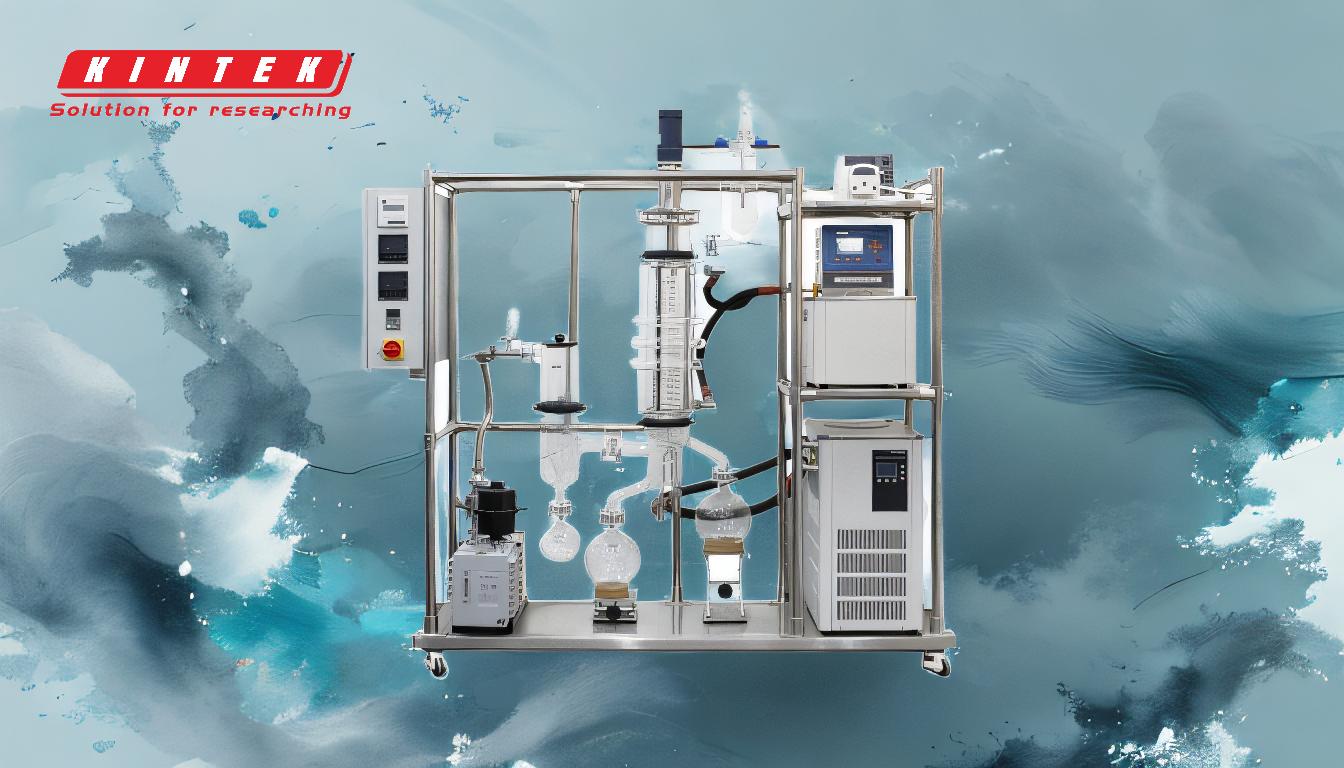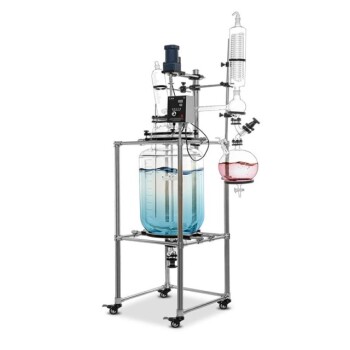Simple distillation is a technique used to separate liquids based on their boiling points. It is effective for mixtures where the components have significantly different boiling points, typically at least 70 degrees Celsius apart. This method is ideal for purifying liquids such as water from salt solutions, separating ethanol from water, or isolating volatile organic compounds. The process involves heating the mixture to its boiling point, condensing the vapors, and collecting the separated components. However, simple distillation is not suitable for liquids with similar boiling points or those that decompose at high temperatures.
Key Points Explained:

-
Principle of Simple Distillation:
- Simple distillation works on the principle that different liquids have different boiling points. When a mixture is heated, the component with the lower boiling point vaporizes first, leaving behind the higher boiling point component.
- The vapors are then condensed back into a liquid, resulting in the separation of the components.
-
Conditions for Effective Separation:
- For simple distillation to be effective, the boiling points of the liquids in the mixture must differ by at least 70 degrees Celsius. This ensures that the components vaporize at distinct temperatures, allowing for clear separation.
- If the boiling points are too close, the components may co-distill, leading to incomplete separation.
-
Examples of Liquids Suitable for Simple Distillation:
- Water and Salt: Simple distillation is commonly used to separate water from salt solutions, producing pure water as the distillate.
- Ethanol and Water: Although ethanol and water have closer boiling points, simple distillation can still be used to separate them, especially in the production of alcoholic beverages.
- Volatile Organic Compounds: Many organic compounds with distinct boiling points can be separated using simple distillation, such as separating benzene from toluene.
-
Limitations of Simple Distillation:
- Similar Boiling Points: Simple distillation is not effective for separating liquids with similar boiling points, as the components will vaporize simultaneously.
- Heat-Sensitive Compounds: Liquids that decompose or react at high temperatures are not suitable for simple distillation, as the heating process may cause degradation.
- Azeotropes: Some mixtures form azeotropes, which are constant boiling mixtures that cannot be separated by simple distillation. For example, ethanol and water form an azeotrope at 95.6% ethanol, making it impossible to separate them completely using simple distillation.
-
Comparison with Other Distillation Methods:
- Vacuum Distillation: This method is used for liquids with high boiling points or those that are sensitive to heat. By reducing the pressure, the boiling point of the liquid is lowered, allowing for separation without thermal degradation.
- Fractional Distillation: This method is used for separating liquids with closer boiling points. It involves a fractionating column, which provides multiple vaporization-condensation cycles, leading to better separation.
-
Practical Applications:
- Laboratory Use: Simple distillation is widely used in laboratories for purifying solvents and isolating specific compounds from mixtures.
- Industrial Use: In industries, simple distillation is used in the production of distilled water, alcoholic beverages, and essential oils.
- Environmental Applications: Simple distillation is also used in water treatment plants to remove impurities and produce clean drinking water.
-
Equipment and Setup:
- The basic setup for simple distillation includes a distillation flask, a condenser, a receiving flask, and a heat source.
- The mixture is placed in the distillation flask and heated. The vapors travel through the condenser, where they are cooled and condensed back into a liquid, which is collected in the receiving flask.
-
Safety Considerations:
- Proper ventilation is necessary to avoid the accumulation of flammable vapors.
- Care must be taken to avoid overheating, which can lead to decomposition or even explosions in the case of volatile compounds.
- The use of appropriate glassware and equipment is essential to prevent breakage and ensure efficient separation.
In conclusion, simple distillation is a versatile and widely used method for separating liquids with significantly different boiling points. However, its effectiveness is limited by the boiling point differences and the thermal stability of the components. Understanding these factors is crucial for selecting the appropriate distillation method for a given mixture.
Summary Table:
| Aspect | Details |
|---|---|
| Principle | Separates liquids based on boiling point differences. |
| Effective Separation | Requires boiling points to differ by at least 70°C. |
| Examples | Water from salt, ethanol from water, benzene from toluene. |
| Limitations | Not suitable for similar boiling points, heat-sensitive compounds, or azeotropes. |
| Applications | Labs (solvent purification), industries (distilled water, beverages, oils). |
| Equipment | Distillation flask, condenser, receiving flask, heat source. |
| Safety | Proper ventilation, avoid overheating, use appropriate glassware. |
Need help with distillation setups or equipment? Contact our experts today for tailored solutions!















